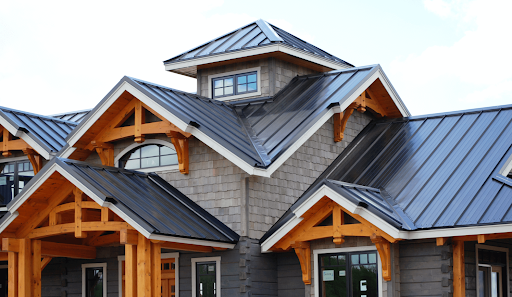The roof is one of the most critical components of any building, protecting it from the elements and ensuring the safety and comfort of its occupants. Over time, roofs can deteriorate due to various factors such as age, weather conditions, and lack of maintenance. When the time comes for a roof replacement, many homeowners may wonder how difficult the process will be. So, whether you’re contemplating a roof replacement at Colony Roofers in Atlanta or simply seeking information, join us as we unravel the complexities and demystify the process of replacing a roof.
Table of Contents
Assessing the Need for Roof Replacement
Before diving into the roof replacement process, it is essential to evaluate whether a replacement is necessary. Signs that may indicate the need for a new roof include missing or damaged shingles, leaks, water stains on ceilings, excessive granule loss, sagging roof deck, and extensive wear and tear. Consulting with a professional roofing contractor can provide an accurate assessment and help determine if a replacement is required.
Choosing the Right Roofing Materials
Once it has been established that a roof replacement is necessary, the next step is selecting the appropriate roofing materials. There are various options available, including asphalt shingles, metal, tile, wood shakes, and slate. Factors to consider when choosing the material include budget, climate, durability, and aesthetic preferences. Each material has its own installation requirements and longevity, so it’s crucial to make an informed decision based on individual needs.
Hiring a Professional Roofing Contractor
Replacing a roof is a complex and labor-intensive task that requires specialized knowledge and skills. Hiring a professional roofing contractor is highly recommended to ensure a successful and efficient roof replacement process. Look for licensed and insured contractors with a proven track record of quality workmanship. Obtaining multiple quotes and checking references can help make an informed decision when selecting a contractor.
Obtaining Permits and Planning the Project
In many jurisdictions, a permit is required for roof replacement projects. The roofing contractor should be familiar with local building codes and regulations and can assist in obtaining the necessary permits. Proper planning is essential to minimize disruptions to daily routines. Discuss the project timeline with the contractor to understand how long the process may take and plan accordingly.
Removing the Old Roof
Before installing a new roof, the old roofing material must be removed. This process involves stripping away the existing shingles, underlayment, and any damaged or deteriorated decking. It is a labor-intensive and messy job that requires caution and expertise. The contractor will dispose of the old material responsibly, ensuring compliance with waste management regulations.
Inspecting and Repairing the Roof Deck
Once the old roof has been removed, the underlying roof deck is thoroughly inspected for damage or deterioration. Any weak or rotten sections are replaced or repaired to ensure a stable base for the new roof. Addressing any underlying issues is crucial to prevent future problems and maximize the lifespan of the new roof.
Installing Underlayment, Flashing, and Ventilation
After the roof deck is in good condition, the installation of underlayment, flashing, and ventilation components begins. Underlayment acts as a moisture barrier, protecting the roof deck from water penetration. Flashing is installed around roof openings and areas prone to leaks, such as chimneys and skylights. Proper ventilation is crucial for maintaining a healthy roof system and preventing moisture buildup.
Installing the New Roofing Material
With the preparatory steps completed, the installation of the new roofing material can commence. The specific process varies depending on the chosen material, but it generally involves carefully placing and securing the shingles, tiles, or panels according to the manufacturer’s instructions. Attention to detail is critical to ensure proper alignment, water-shedding capabilities, and overall aesthetics.
Clean-up and Final Inspections
Once the new roof is installed, the job is not complete. A reputable roofing contractor will conduct a thorough clean-up, removing any debris, nails, and other materials from the premises. Final inspections are conducted to ensure the roof replacement meets quality standards and complies with building codes. The contractor may also provide documentation, warranties, or guarantees for the new roof.
Maintenance and Care
To prolong the life of the newly replaced roof, regular maintenance and care are essential. This includes routine inspections, gutter cleaning, removal of debris, and prompt repairs for any damage or leaks. Adhering to the manufacturer’s recommendations and seeking professional advice when needed can help maintain the roof’s integrity and protect the investment.
Replacing a roof is a complex undertaking that requires careful planning, professional expertise, and attention to detail. While it may seem daunting, hiring a reputable roofing contractor and understanding the steps involved can make the process more manageable. By following industry best practices, selecting the right materials, and maintaining the roof properly, homeowners can ensure their new roof provides lasting protection and peace of mind and enhances the overall aesthetics of their property.





